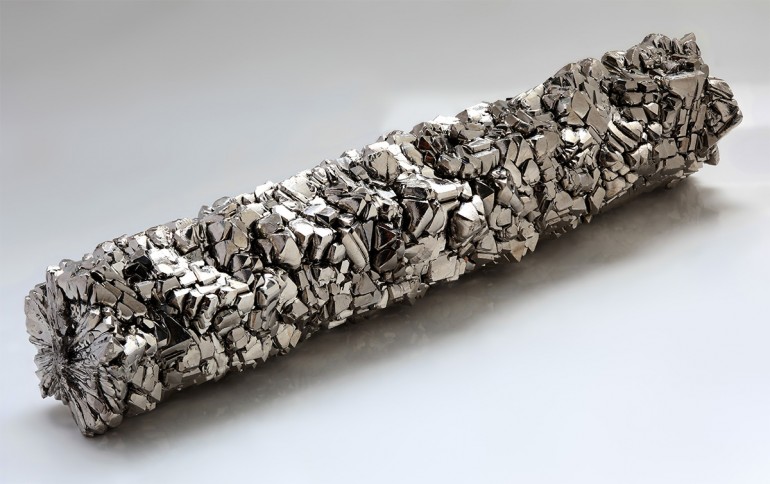Northeast Minnesota could soon be exporting a high value mineral called ilmenite, a high value iron-titanium oxide that has many industrial applications following a cooperative effort amongst three organizations.
The Iron Range Resources and Rehabilitation Board (IRRRB) recently approved a $300,000 funding grant to the University of Minnesota Duluth’s Natural Resources Research Institute (NRRI) for a research on the feasibility of physically mining the titanium compound in the area.
Many members of the IRRRB are confident that the project will gain ground, saying that they know of the ilmenite potential in the region. Senator Tom Bakk was quoted as saying that there has been talk about the significant titanium deposits in the region, and a couple of times extracting the mineral was almost accomplished.
The University of Minnesota’s Office of the Vice President for Research will match the grant. The goal of NRRI is to develop bulk concentrate sample to test unique hydrometallurgical technology. If the trial is successful, the three agencies will join hands to determine the economic impact, investment requirements, and funding partners for the project.
Ilmenite is a precious iron-titanium oxide that is used in various industrial applications. It is widely used in the production of paper, paint, plastic, rubber, textiles, and pharmaceutical products.
Colored iron black or steel gray, it is often used as an abrasive and mineral specimens. About 50 percent of it is consumed by North America and Europe. Major producers are South Africa, Australia, and Canada.
Mining companies have known that there is a large deposit of ilmenite in the Iron Range, there have been challenges in processing the material into a marketable product.
But a Canadian company, Process Research Ortech, Inc., has developed a new process which it believes can remove impurities in northeastern Minnesota ore such as magnesium from the ilmenite ore in the region. The company believes that the process can develop high-grade source of ilmenite in the Iron Range.
The same process will be the one to be tested by the NRRI through the grant from the IRRRB and the University of Minnesota.
NRRI Director Rolf Weberg believes that if the tests prove successful, the program will be a breakthrough and can spark a new mining industry in the Iron Range.
He, however, said that the development process could be pretty upstream. He also didn’t discount the possibility that it would take years before actual mining will take place. He said the NRRI will see to it that the process will be compressed as much as possible.
NRRI has gotten more than 50 tons of the material from the area, with concentrates ready to be tested with the new technology from Process Research Ortech.
Additional Funding
But while the UMD and IRRB grants will fund the research, the NRRI needs more money to move the project in case the testing goes well. The body is seeking around $3.6 million from the Legislature. Weberg says that if everything goes well, the project will be managed by the Department of Natural Resources with some help from the NRRI. He adds that the process could take two years to complete.
The additional funding from the Legislature will focus on research on three areas—increasing the efficiency of existing mining operations, diversification and techniques to improve value added opportunities, and building a portfolio of technologies that can address sulfate contamination.
NRRI will evaluate the potential of ilmenite mining at the Longnose deposit, one of the 13 deposits in Minnesota identified with ilmenite potential. Longnose Desposit is located in the northeast of Hoyt Lakes, Minn.
It is believed that ilmenite is close to the surface compared to mining of other ores. This means that open pit mining will require very minimal stripping. The ilmenite deposit also has low sulfide mineral concentrations and low in elements associated with titanium.
The Longnose Deposit is said to have high grade ilmenite content, with a 2012 technical report by Cardero Resource Corporation citing that it has an average of 31.5 percent of the iron-titanium oxide. That is impressive when compared to other mineral deposits like the NorthMet deposit which only has 1 percent copper and less than 0.1 percent of nickel.
The titanium mining research could be the boost that the mining industry in the region needs. The iron mining industry’s recent downturn has affected the Iron Range, which has been beset by job cuts.
The United States has very limited ilmenite mining, with is domestic reserves very low compared with other countries like China.
Market value of titanium mineral concentrate is pegged at $110 a ton, while iron ore sells for around $45. The mineral can be alloyed with aluminum, iron, and other elements for strong and lightweight materials for jet engines, space, and missile applications. It can also be used for other applications like dental implants and mobile phones.

